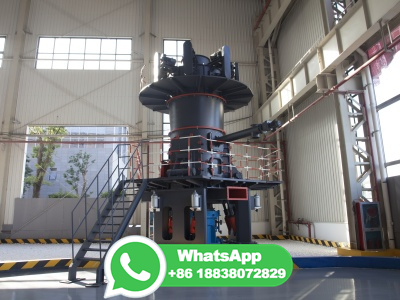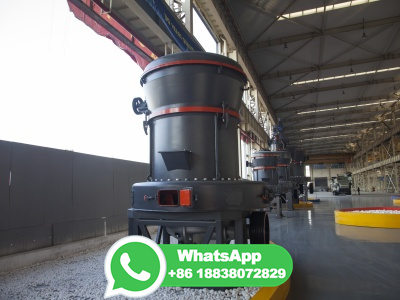
The primary liquid emissions from coal conversion processes are heavily contaminated by ammonia, sulphides and other inorganics, as well as by phenolic and other organic compounds. The solid wastes are derived from coal ash, spent catalyst, and solid sludges. Previous chapter Next chapter 1. Introduction 62 2. Gasification 65
WhatsApp: +86 18838072829
1. Introduction. Agreements on climate protection,, the Paris Climate Agreement [1] or the European Green Deal [2], aim to reduce CO 2 emissions in particular, which poses new challenges for all carbonconverting processes. In 2019, coal was still the second most common energy source for power generation worldwide [3], [4].To achieve climate protection goals, the use of fossil fuels ...
WhatsApp: +86 18838072829
ICL processes first convert coal to a gaseous intermediate, which is then converted to liquid fuel. Coal gasification technologies rely on incomplete combustion, wherein coal is heated with a quantity of air that is insufficient to allow complete combustion (formation of carbon dioxide and water). The products are condensables and tars ...
WhatsApp: +86 18838072829
Between 2017 to 2019, coal production declined by 9%, mostly because of decreasing global coal demand and increasing competition from natural gas. coal production decreased by an additional 24% in 2020 because of a coal surplus in 2019 coupled with lower electricity demand due to pandemicrelated economic impacts.
WhatsApp: +86 18838072829
Nearly half of the country's coal was used for power generation. Coal consumption in metal smelting and processing, petroleum and coal processing and conversion, coal mining and washing, chemical raw materials and products and other industries accounted for %, %, %, % and %, respectively, of coal consumption.
WhatsApp: +86 18838072829
Gasification of coal is a process whereby coal is converted to a syngas, which is predominately a mixture of carbon monoxide and hydrogen.
WhatsApp: +86 18838072829
Energy conversion is the transformation of one form of energy into another form. More specifically, the term energy conversion refers to the process through which energy is changed into forms that are useful to humans. For hundreds of years, humans have used an array of devices and systems for this purpose.
WhatsApp: +86 18838072829
Special Issue Information. This Special Issue focuses on coal conversion processes through the prism of the transition to CO2neutral energy production. The primary exploitation path of coal,, coal combustion for energy production, is strongly affected by CO2 emissionrelated penalties. Although the power sector is shifting to renewables ...
WhatsApp: +86 18838072829
1 Introduction Coal is a combustible sedimentary rock formed from ancient vegetation which has been compressed between other rock strata. The vegetation was accumulated under conditions that either limited or inhibited its decay.
WhatsApp: +86 18838072829
Solid powder that can last for decades. By contrast, the new process achieves a conversion of well over 90 percent and eliminates the need for the inefficient heating step by first converting the carbon dioxide into an intermediate form, liquid metal bicarbonate. That liquid is then electrochemically converted into liquid potassium or sodium formate in an electrolyser that uses lowcarbon ...
WhatsApp: +86 18838072829
Coal Conversion Processes Home Energy Physical Sciences EnergyGenerating Resources Fossil Fuels Coal Coal Conversion Processes December 2016 /..
WhatsApp: +86 18838072829
Coal Conversion Processes: Gasification and Liquefaction. In Environmental Implications of Expanded Coal Utilization, 1982. ... The coal conversion plant at Kingsport, Tennessee, combines coal gasification with methanol synthesis in a SBCR. Methanol can be used as a fuel or as a chemical feedstock. It can also be dehydrated and polymerized over ...
WhatsApp: +86 18838072829
Conversion processes include combustion, pyrolysis, gasification, liquefaction and various combined upgrading operations to obtain energy, gaseous and liquid fuels, and other valuable products. Aravind Sam, Debabrata Barik, in Energy from Toxic Organic Waste for Heat and Power Generation, 2019.
WhatsApp: +86 18838072829
Introduction: The Case for Clean Coal. The world demand for electricity has increased linearly by an average of % from 1974 to 2018, except for brief drops in 1974, 2009, and 2019 that coincide with economic recessions, to a total of 26,730 terawatthours (TWh). The global demand is driven by the twoblock of countries.
WhatsApp: +86 18838072829
Determine an energy and mass balances for this process and report how much energy was contained in each of the coproducts as well as the overall conversion efficiency. Solution. 1. Draw a schematic of the complete mass and energy balance process as in Figure (PageIndex{11}). 2. Calculate the energy contained in the original biomass as:
WhatsApp: +86 18838072829
The coal conversion processes of the future prospect are plotted along with the current or demonstrated processes for electricity and/or H {sub 2} production. These efficiencies are given considering a CO {sub 2} controlled environment. The processes considered include subcritical and ultra supercritical PC processes retrofit with either MEA ...
WhatsApp: +86 18838072829
The use of coal, an abundant energy source, has increased during the twentieth century. However, emissions resulting from the use of coal have had harmful effects on the environment, which require controlling the type and amount of gaseous products released into the conversion processes and their products are discussed in detail ...
WhatsApp: +86 18838072829
Feedstock Properties for Thermochemical Conversion Thermochemical Conversion Technologies. Thermochemical conversion is the controlled heating and/or oxidation of biomass as part of several pathways to produce intermediate energy carriers or heat (Figure 1).Included is everything from biomass combustion, one of the simplest and earliest examples of human energy use, to experimental ...
WhatsApp: +86 18838072829
Energy conversion often involves some degree of energy loss during the conversion process. Certain energy conversion processes, particularly those utilising nonrenewable energy sources like fossil fuels, can have negative environmental consequences. Many energy conversion methods rely on finite resources, such as fossil fuels and certain minerals.
WhatsApp: +86 18838072829
The ESR studies on coals and coal derived maters have been carried out for over 60 years. The main works before 1990s were the determination of origin of ESR signals, quantification of spin concentration, g value, linewidth and line shape, and correlating the ESR results with pyrolysis and DCL reactions.
WhatsApp: +86 18838072829
Steel production causes significant emissions of carbon dioxide. To decarbonize steel production and its high carbon dioxide emissions, Fraunhofer researchers, TS ELINO GmbH and Salzgitter AG are working on converting an existing steel mill to climateneutral production methods. The aim is to produce steel by the direct reduction of iron ore with hydrogen, which would completely replace ...
WhatsApp: +86 18838072829
Biomass energy conversion processes can be classified into two broad groups: biochemical and thermochemical. Biochemical conversion processes produce specific products, such as biogas and ethanol ( Hasunuma et al., 2014, Lin et al., 2021 ); the conversion is a relatively slow process, usually taking hours, days, or weeks, depending on the type ...
WhatsApp: +86 18838072829
Coal is a black or brownishblack sedimentary rock that can be burned for fuel and used to generate is composed mostly of carbon and hydrocarbons, which contain energy that can be released through combustion (burning). Coal is the largest source of energy for generating electricity in the world, and the most abundant fossil fuel in the United States.
WhatsApp: +86 18838072829
Coal Pyrolysis khan 2000, Ullmann's Encyclopedia of Industrial Chemistry Free PDF Enrichment of reactive macerals in coal: its characterization and utilization in coke making Prasad Kopparthi Metallurgical Research Technology Macerals in coal are of different types: reactive and inert.
WhatsApp: +86 18838072829